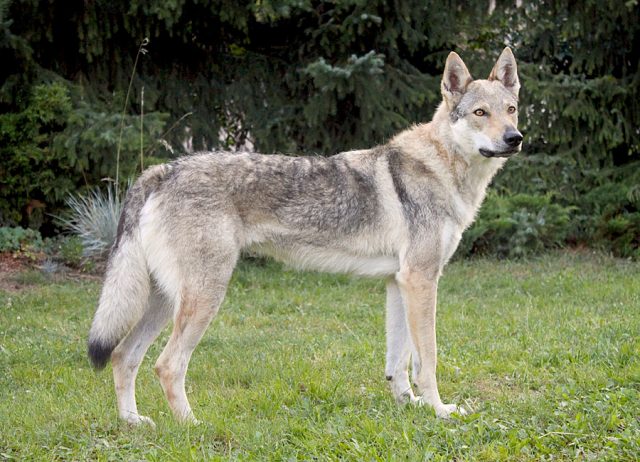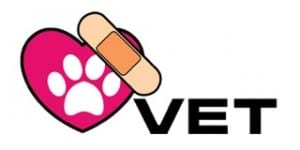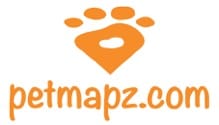Type the name of the breed you're looking for below
[wpdreams_ajaxsearchlite] Don't see the breed your're looking for? Click here and let us know!
Breed Characteristics
1 paw - breed exhibits the least amount of this characteristic
5 paws - breed exhibits most amount of this characteristic
Czechoslovakian Vlcak
| Other Names | Czechoslovakian Wolfdog, Slovak Wolfdog, Czech Wolfdog |
| Country of Origin | Czech Republic |
| Weight | Males: 57 lbs. (26 kg) Females: 44 lbs. (20 kg) |
| Height (at withers) | Males: 26 in. (65 cm) Females: 24 in. (60 cm) |
| Coat | The hair is straight, close and very thick. |
| Colour | The colour of the hair is from yellow-grey to silver-grey, with a light mask. |
| Litter Size | 2 - 8 puppies, average 4 - 5 |
| Life Span | 12-16 years |
| Origin & History | In 1955, when Ing. Karel Hartl began to consider crossing Carpathian wolf with a German Shepherd. Initially, the crossing was conducted as a scientific experiment. A few years later, however, the idea was born to cultivate a new breed. The first hybrids of a female wolf Brita and male German Shepherd Cézar was born on 26 May 1958, in Libějovice. Puppies of the first generation in appearance and behavior resembled wolf. Their upbringing was difficult, the training was possible, but the results hardly match the effort. In adulthood was again associated with German Shepherds, so in the fourth final generation decreased the proportion of "wolf blood" up to 6.25%. Most individuals of the third and fourth generation was able to attend a normal course and could be placed in a service performance. Compared to dogs had better navigational skills, night vision, hearing and sense of smell. In tests of endurance, hybrids finished the entire 100 km route without being exhausted. The lecture of Ing. Karel Hartl "Results of crossing wolves with dogs" brought major attention at the World Dog Show held in June 1965 in Brno and in Prague at the annual meeting of the Fédération Cynologique Internationale (FCI) and the International Cynologic Congress. In the following year Ing. Hartl compiled a draft of a standard of a new dog breed. The wolf Brita then gave the basis of the second line after the merger with the German Shepherd Kurt. The third line was made by joining the wolf Arga with female dog Asta from the SNB. In 1977, the individual of the 3rd generation named Xela of border guards, was covered by wolf Sarika, he then also mated female Urta of border guards. Last addition of wolf blood took place in 1983. The wolf Lejdy of ZOO Hluboká nad Vltavou gave birth to last line of a new breed, the father of the puppies became a German Shepherd Bojar von Shottenhof. Furthermore, breeding has been carried out only in closed populations and the hybrids began to be referred to as Czechoslovakian wolfdogs. In 1982 it was recognized by the Czechoslovakian breeders associations as a national breed. In 1989 it became FCI standard no. 332, group 1, section 1. It won the title of "World champion" at World Dog Show in Brno in 1990. Ten years after the recognition of the FCI standard, the breed had to again confirm that the breed is further viable and met all the criteria. The recognition of the Czechoslovakian wolfdog breed has been definitively confirmed. As of January 2014, most puppies a year are registered in Italy (up to two hundred), in the Czech Republic it's about hundred and in Slovakia it's about fifty. |
| Personality | The Czechoslovak Wolfdog is lively, very active, capable of endurance, docile with quick reactions. It is fearless, courageous, suspicious, yet does not attack without cause. It shows tremendous loyalty towards its master. Resistant to weather conditions. Versatile in his use. The Czechoslovakian Wolfdog is very playful. Without proper leadership it can be temperamental. It learns easily. We can admire its all-around qualities rather than its specialization. However, we should not expect it should train spontaneously; the behavior of the CsV is strictly purposeful—it is necessary to find motivation for training. The most frequent cause of failure is usually the fact that the human is not as strong-minded as the dog, lacking leadership and/or the dog is tired out with long, useless repetitions of the same exercise, which results in the loss of motivation. These dogs have admirable senses and are very good at following trails. They are really independent and can cooperate in the pack with a special purposefulness. If required, they can easily shift their activity to the night hours. The independent work of the pack without the necessary control of a man was the reason for their use in the army. Sometimes problems can occur during their training when barking is required. Czechoslovakian Wolfdogs have a much wider range of means of expressing themselves and in some situations barking is unnatural for them; they try to communicate with their masters in other ways. Generally, to teach CsVs stable and reliable performance takes a bit more time than it does to teach traditional specialized breeds. The Czechoslovakian Wolfdog can be a bit dog aggressive if the humans are not displaying the proper authority. It is not generally trustworthy with other pets. It is usually good with children, but suspicious and watchful with strangers. |
Care Requirements
| Health | Generally a healthy, hardy breed. Prone to hip dysplasia. |
| Grooming | This breed sheds heavily twice a year. Bathing is most unnecessary, as the coat sheds dirt readily. Dry shampoo occasionally. This dog is clean and odorless. |
| Exercise | This breed needs a lot of daily exercise and adequate space. It needs to be taken on a daily, long, brisk walk where the dog is made to heel beside or behind the human holding the lead, as in a dog's mind the leader leads the way, and that leader needs to be the human. |
| Other Considerations | The Czechoslovakian Vlcak will do okay in an apartment if it is sufficiently exercised. It is moderately active indoors and will do best with a large yard. Well-suited for cold climates. |



